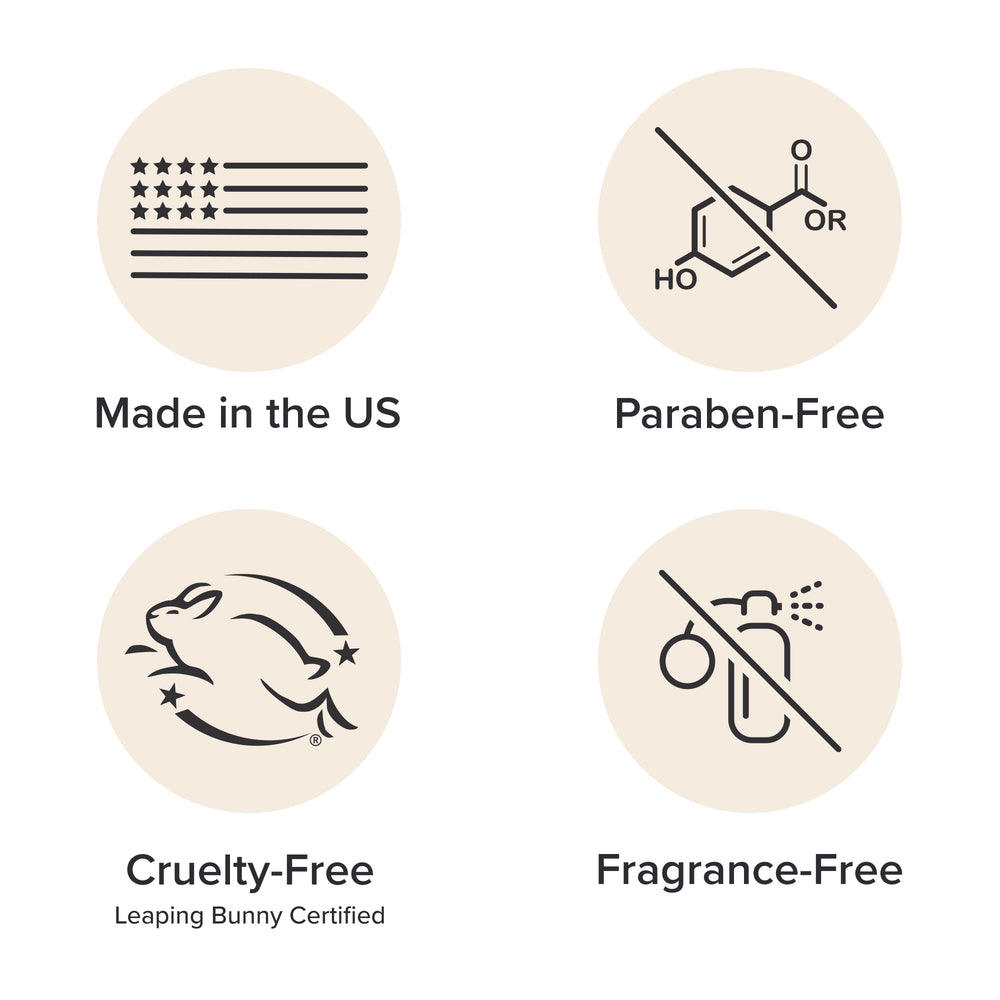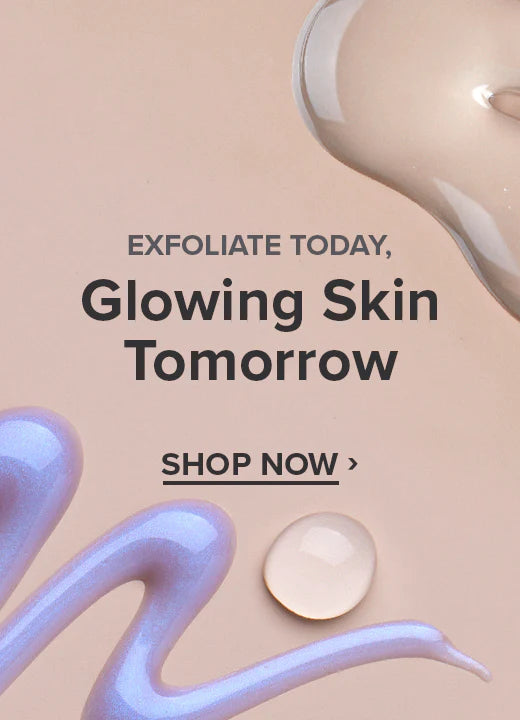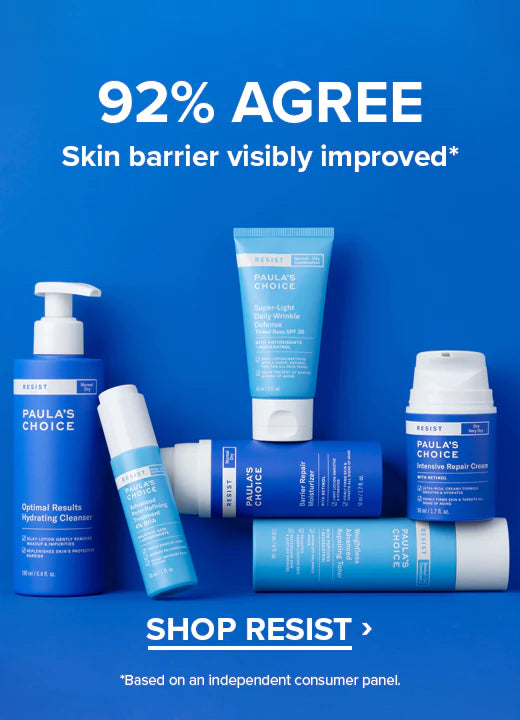Written by: Desiree Stordahl
Medically Reviewed by: Dr. Debra Jaliman MD Board-Certified Dermatologist
Pregnancy is an exciting time, but it often comes with many skin care challenges. Most pregnant people wonder which skin care products are OK to use and which ones aren’t. Is salicylic acid during pregnancy OK? What about glycolic acid? Is retinol OK during pregnancy? The answers might surprise you!
First, it’s always important to check with your physician and discuss the specific skin care products you want to use. Happily, most skin care products such as cleansers, toners, moisturizers, eye creams, scrubs, and lip balms that don’t contain over-the-counter ingredients regulated by the United States FDA are fine for use throughout pregnancy. However, pregnancy skin care involving topical prescription products, certain over-the-counter skin care ingredients, and retinol are a different issue.
Using skin care products during pregnancy
Misinformation about pregnancy skin care creates frustration and confusion for pregnant people during a time they should be enjoying to the fullest. To get some much-needed clarification, we consulted the American College of Obstetricians and Gynecologists regarding the ingredients we’re asked about most. Here’s what they had to say:
- Salicylic acid (BHA)is a superior exfoliant for skin, and the small percentages used in skin care are considered low risk to use while pregnant. Look for concentrations between 1–2% and reserve use for small areas, such as the face, when needed.
- You can also consider using glycolic acid or lactic acid (AHA) exfoliants during your pregnancy. What about in-office AHA or BHA peels? AHA peels are preferred if the peel is to be applied over a large area of the body.
- Tranexamic acid is a newcomer to skin care that isn’t known to be a problem for topical use on skin with hyperpigmentation while pregnant; however, we don’t have enough data yet for it to be recommended without reservation. It’s another ingredient to discuss with your physician.
- Azelaic Acid via topical prescription is considered safe for use during pregnancy and has good research showing it can improve brown skin discolorations plus help with breakouts and visible symptoms of rosacea.
- Anti-aging products with vitamin C, niacinamide, hyaluronic acid, and peptides are generally considered safe for use during pregnancy—there’s no research proving they’re a problem for topical use. But we repeat: If you’re uncertain about starting a new anti-aging product or a combination of ingredients, check with your physician and follow their advice.
- Avoid prescription retinoids(Renova, Retin-A, Differin, Tazorac, and generic tretinoin) and over-the-counter products with retinol due to its relation to prescription retinoids. Consider switching to an anti-aging serum that does not contain retinol or its derivatives (retinyl retinoate, retinaldehyde, or hydroxy pinacolone retinoate).
- Avoid hydroquinone(which is available by prescription only) during pregnancy and while breastfeeding. The same caution goes for the ingredient arbutin and derivatives such as alpha-arbutin because both break down to hydroquinone on skin. Instead, look to products that contain niacinamide and various forms of vitamin C.
- Prescriptions for other skin concerns: Your doctor will be able to advise you on which topical medications are suitable for use during pregnancy, how they should be used, and whether the benefits outweigh the risks (if any).
- Sunscreen actives (AKA UV filters): With the exception of oxybenzone (explained below), UV filters are not known to be a risk during pregnancy. The American College of Obstetricians and Gynecologists hasn’t found any of the alleged fears about sunscreen ingredients substantiated by medical or animal research; however, they now recommend avoiding oxybenzone due to a potential link to a congenital disorder known as Hirschsprung’s Disease. This disorder impacts nerve cell formation in the colon and can impact a baby’s ability to have normal bowel movements. It’s important to note that this association is not proof that oxybenzone causes Hirschsprung's Disease.
According to dermatologists at the Henry Ford Department of Dermatology in Detroit, “In the case of Hirschsprung disease, it is important to emphasize that causation remains unknown especially given that the in vivo association was made using a single spot urine BP-3 [oxybenzone] collected at an unspecified time after pregnancy, and the proposed pathogenic mechanisms were based on in vitro studies. Hirschsprung disease is exceedingly rare, with a recent 20-year epidemiologic study in California citing a stable incidence of 2.2 per 10,000 births with a higher incidence in individuals with skin of color ( per 10,000 births, 4.05 in African Americans, 2.45 in Asians, and 1.89 in Caucasians), a demographic with traditionally lower sunscreen usage.”
It's easy to avoid oxybenzone in sunscreens, and if you find your skin is more sensitive during pregnancy, consider using mineral sunscreens with only the actives of titanium dioxide and/or zinc oxide, as both are non-irritating.
Note that we strongly recommend you share every skin care product (especially the prescription and over-the-counter drug products) you’re planning to use while pregnant with your physician and only proceed if they approve.
The information above isn’t meant to be exhaustive, but it should give you a clear idea of what’s OK to use during pregnancy and what should be avoided. We hope you’re feeling relieved that you can achieve your skin care goals during pregnancy!
Disclosure: This article is not intended to replace medical advice given to you by your physician. Only they know your medical history and can offer advice that is appropriate to your individual needs. Your doctor should make all final decisions regarding skin care products and ingredients during pregnancy.
References for this information:
- Journal of the American Academy of Dermatology, May 2022, page E215
- Advances in Dermatology and Allergology, February 2022, pages 26–33
- Journal of Clinical and Aesthetic Dermatology, February 2022, pages 49-57
- International Journal of Hygiene and Environmental Health, Volume 227, June 2020, ePublication
- Journal of Perinatology, July 2017, pages 778-781
- Journal of Epidemiology and Global Health, March 2017, pages 63-70
- International Journal of Women’s Dermatology, March 2017, pages 6-10
- Dermatologic Therapy, July-August 2013, pages 302-311
- Canadian Family Physician, June 2011, pages 665-667
- Precarie International, June 2005, pages 100-101
- American Journal of Clinical Dermatology, Volume 4, 2003, pages 473-492
- Teratology, May 2001, pages 186-192









